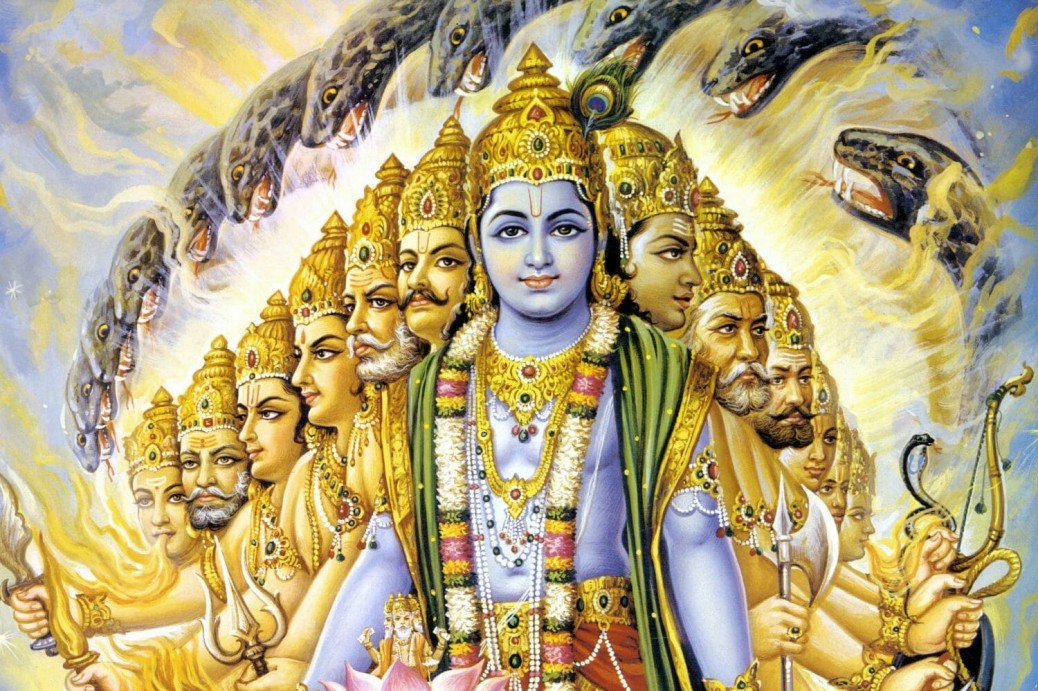Keeping In The Middle – In Gita Verse 18.11 It is indeed impossible for an embodied being to give up all activities. But he who renounces the fruits of action is called one who has truly renounced.
In Bhagavad Gita Verse 18.11, it is stated that it is impossible for an embodied being to give up all activities. However, one who renounces the fruits of their actions is considered to have truly renounced. This principle of Shakya emphasises the significance of detaching oneself from the results of one’s actions, rather than the actions themselves.
It is impractical to abandon all activities. Every action, whether it is closing one’s eyes, eating, breathing, or even seeking solitude in a forest, constitutes karma. The nature of karma varies from person to person – be it a king or a beggar – but the essence remains the same. Therefore, it is not feasible to forsake all deeds.
The feasible approach is to surrender the desire for success and the attachment to the results of actions. When one dedicates all actions to a higher power, the craving for outcomes naturally dissipates. This understanding is crucial for achieving true renunciation.
As long as the choice of actions remains in one’s hands, the desire for results persists, leading to a fear of failure and a longing for success. This attachment to outcomes can create significant mental and emotional turmoil. By relinquishing control and becoming an instrument of a higher power, one can transcend these desires and achieve a state of equanimity. The concept of ‘nimitta’ (instrument) is pivotal in this context. Just like a peg that holds whatever is hung on it without preference or resistance, one should become an instrument, allowing whatever is meant to happen to occur without attachment to the results. In this state, actions are performed with full dedication, but without the burden of personal gain or loss, thereby achieving true renunciation.
Krishna exemplified this principle through his actions. Serving as Arjuna’s charioteer, he demonstrated profound humility and acted according to the demands of the situation without attachment to outcomes. His role was not premeditated with the intention to deliver the Bhagavad Gita; rather, he responded to the immediate needs of the moment with clarity and wisdom. This detachment from future expectations and steadfast focus on the present moment encapsulates the essence of true renunciation. Krishna’s life and actions illustrate that true wisdom lies in responding to the present with full awareness and without any attachment to the fruits of one’s actions.
An individual who has attained true realisation neither displays humility nor ego; instead, they respond to situations with complete presence. This approach is in harmony with Buddha’s teachings, which emphasise the importance of maintaining balance and avoiding extremes. By remaining centred, free from excitement and corruption, one achieves a state of purity and calmness.
Buddha’s concept of “keeping in the middle” is fundamentally about maintaining a state of calm. When an individual leans too far to the left or the right, they become excited, which disrupts their equilibrium. Therefore, it is crucial to avoid being a rightist or a leftist. By staying centred, one avoids the pitfalls of excitement, achieving a state of calmness where one is neither overly involved nor detached, but simply present.
This state of being is also what Buddha refers to as “being pure.” Leaning to the left results in corruption from the left, while leaning to the right results in corruption from the right. By not leaning in either direction and staying in the middle, one remains uncorrupted and pure. This purity and calmness are essential for gaining true insight and wisdom. Thus, maintaining a balanced, calm, and pure state is the path to enlightenment.
Attachment and possession are illusions. True understanding reveals that there is nothing to possess or renounce. Real renunciation is the recognition that nothing belongs to oneself. This understanding eliminates the dualities of attachment and non-attachment, leading to a state of pure awareness.
The middle way, as taught by Buddha, emphasises avoiding extremes and maintaining balance. This approach ensures that one does not swing between opposites but remains centred and calm. Practising moderation in all aspects, including food intake, leads to a state of balance and awareness.
True renunciation lies in relinquishing the attachment to the fruits of actions and maintaining a balanced, middle path. By practising right actions with awareness and without attachment to outcomes, one aligns with the essence of Krishna’s teachings.
Tags: Keeping In The Middle




